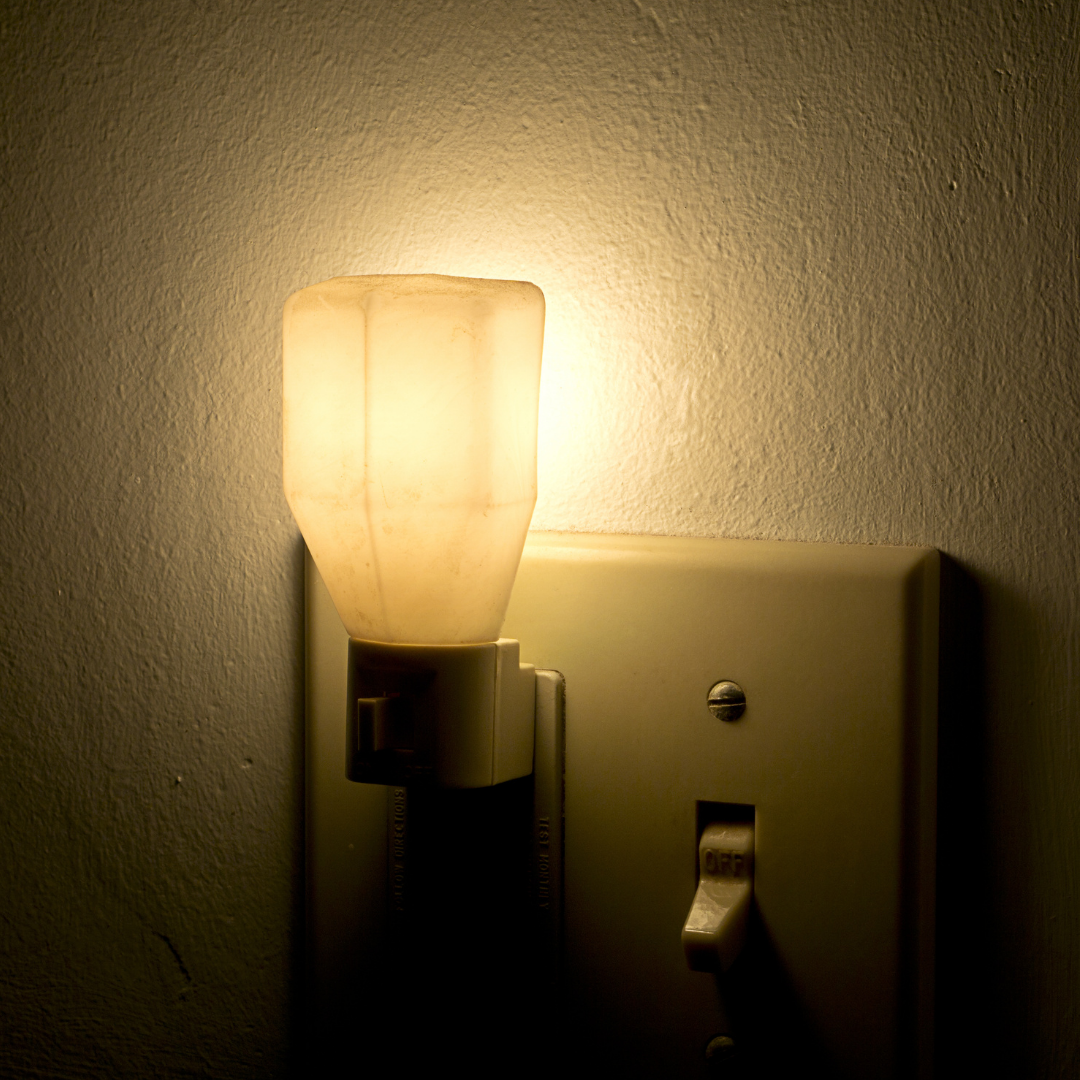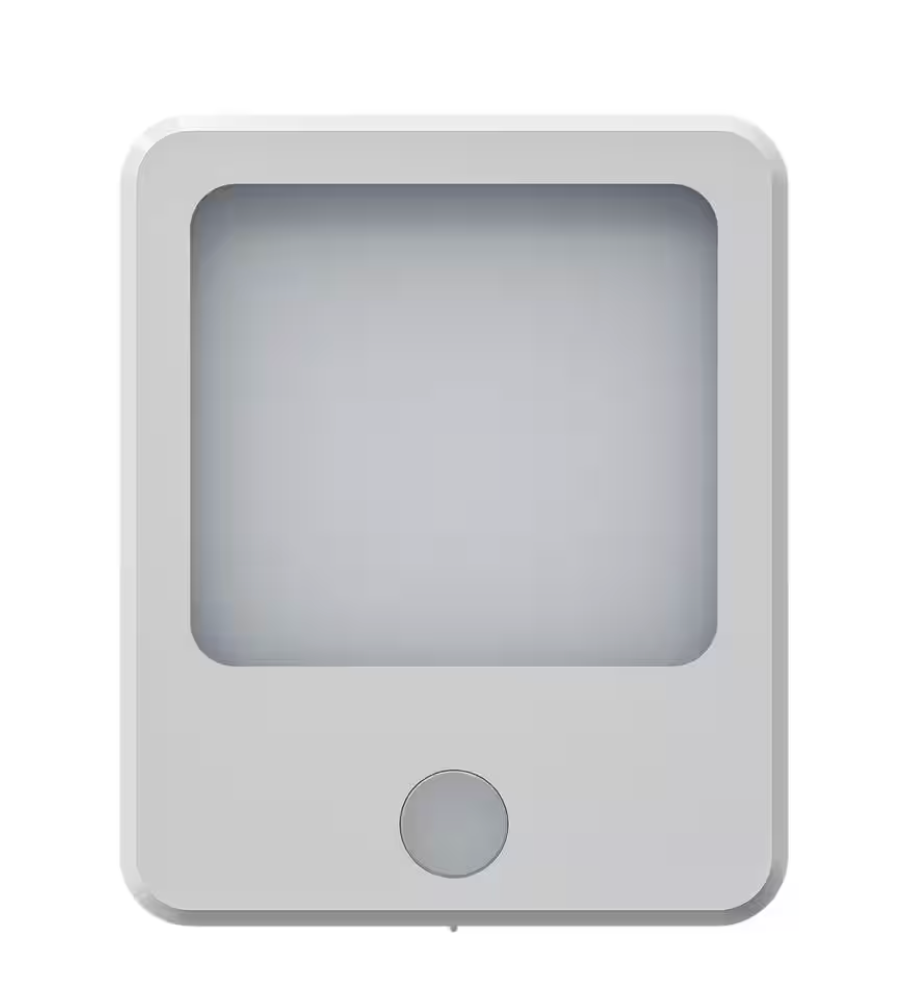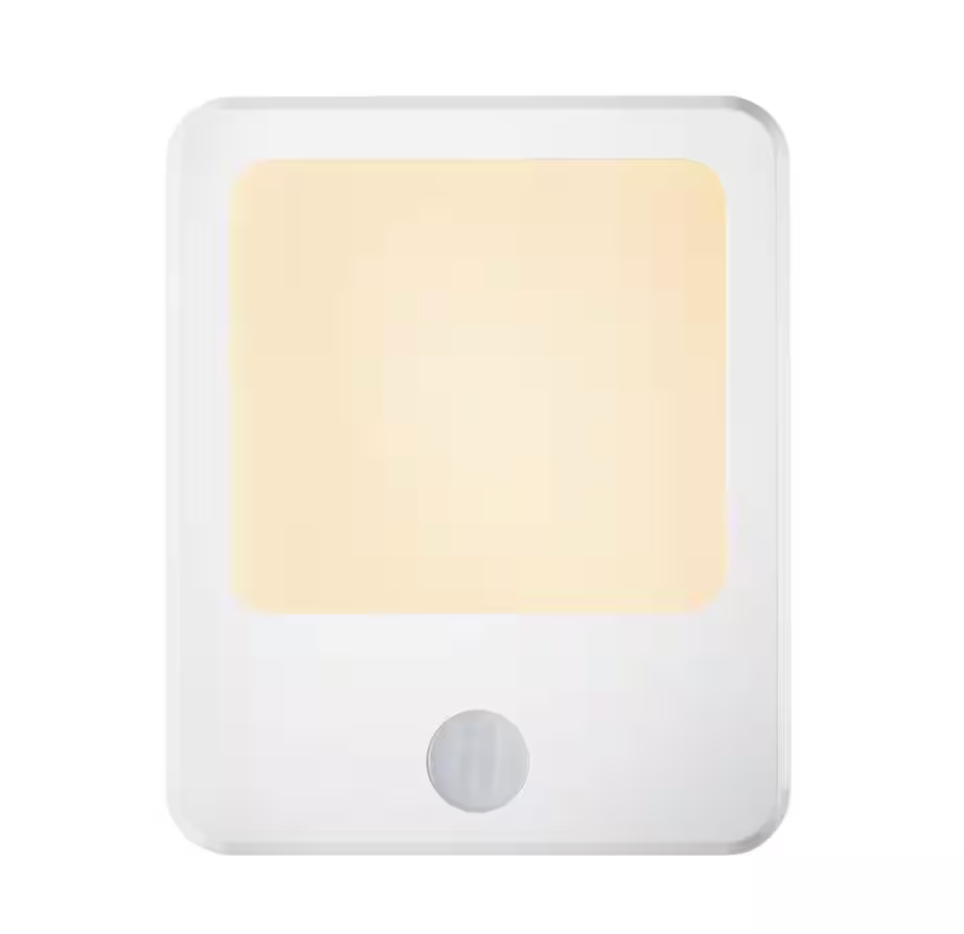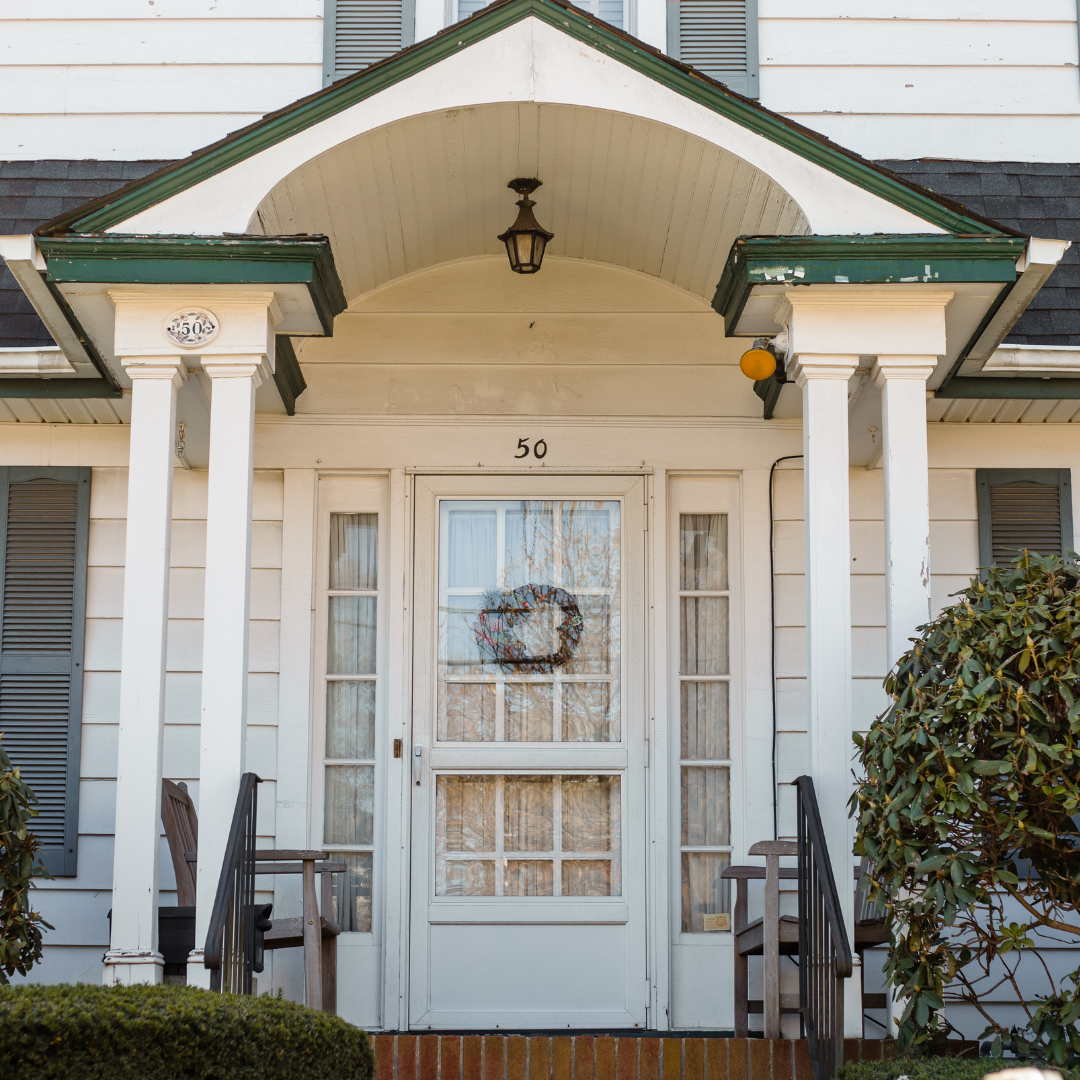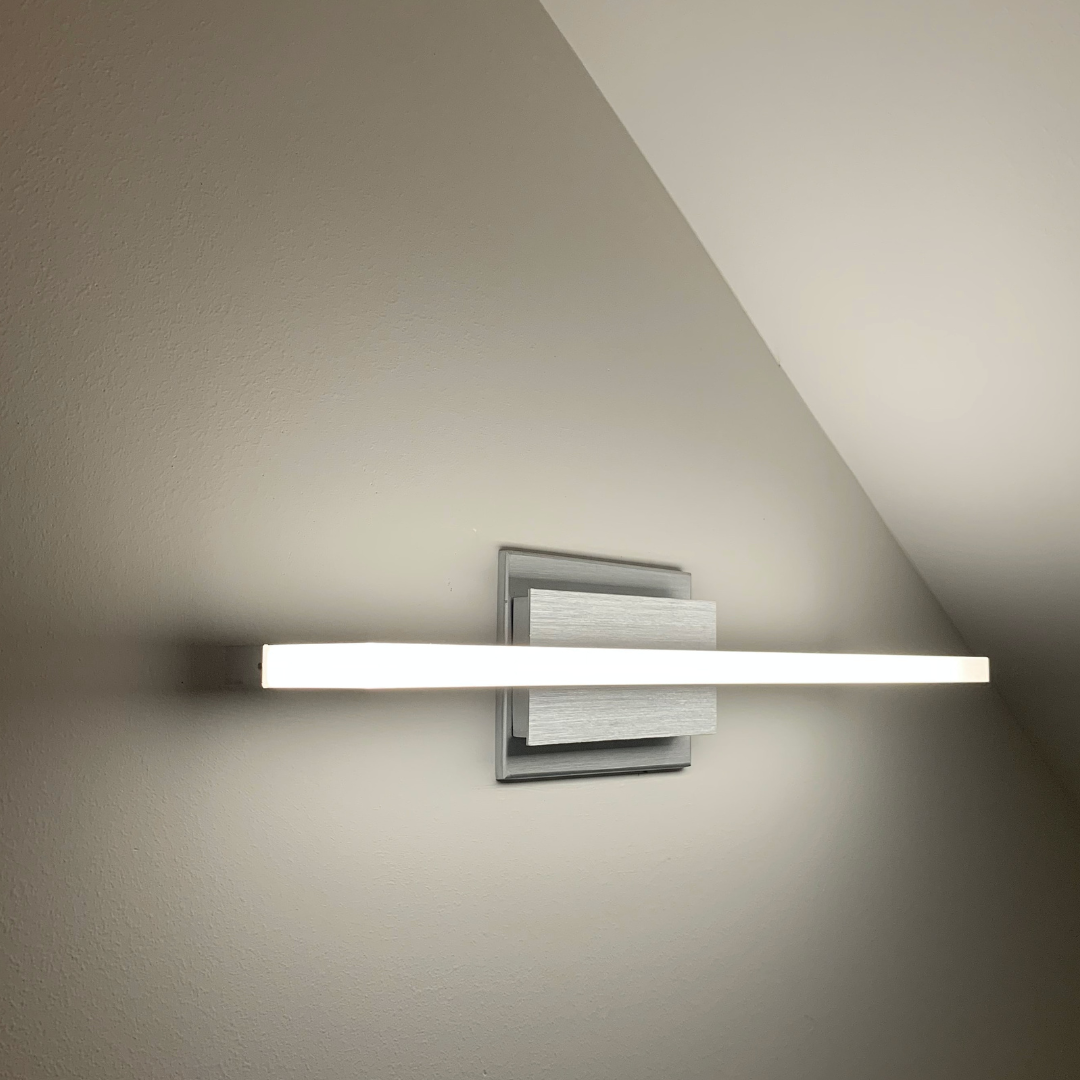One of the most common risks we find in the home often involves limited lighting. It’s not uncommon for many older adults to experience areas of their home that are more difficult to navigate - not just becoming more mobile but because they struggle to see what’s around them.
Luckily, one of the easiest and most cost-effective ways to increase safety at home can be through minor adjustments to one’s home lighting. Being able to clearly see the flooring and surrounding area can significantly reduce the risk of falling or tripping over stairs, furniture or other obstacles within the home.
Although there is a variety of lighting options that can improve visibility, we recommend one first consider implementing nightlights.
Picking The Right Type of Nightlight
Although nightlights may seem like a straightforward home solution, there’s a few different types of lights that are best suited for specific needs and home environments.
First, consider what type of trigger you desire for the light. The main three options are:
- Always-On
- Dusk to Dawn
- Motion Sensor
Always-On: these are what most of us traditionally know. And while potentially the most cost-effective option may not be the best for older adults. These lights can easily become costly if left on throughout the day and can often be too bright for those who are sensitive to light while sleeping.
Dusk to Dawn: a better option than nightlights that stay continuously on would be what’s known as a “dusk to dawn” feature. These lights are able to detect when a room’s lighting is turned down or when the room becomes darker as the night progresses. These are often great when implementing bathroom nightlights when the light often needs to be plugged in near the toilet and sink and one’s movement won’t set off the light right away.
Motion Sensor: lastly, we often recommend motion sensor nightlights for all types of homes and needs. These are often the superior choice not only because of their convenience but because they can significantly minimize the need for an older adult to unsafely find a light switch. This is most critical when one is trying to get out of bed in the middle of the night, need a kitchen nightlight or trying to use the stairs in dim lighting. By triggering the light based on movement, an older adult can focus their attention on their steps and balance and less on finding the light switch.

Different Colors and Brightness Levels
Another thing one may want to consider before purchasing nightlights is the type of color and brightness that each light produces.
A common misconception is that all nightlights are made with either a white or yellow bulb - but this isn’t always the case! In fact there are a variety of nightlights made with either a red or green bulb. It’s important to choose a color that is most appropriate for one’s needs.
So, which color is best?
White or Yellow Light
There’s a reason why most nightlights come in either a white or yellow bulb. This is often because bright light will be the best way to see as much as possible within the room that the night light is illuminating. This type of lighting is most useful when implementing bathroom nightlights, kitchen nightlights or stair nightlights. If you’re looking for lighting that will simply increase visibility around the home, these will be the best option.
Red Light
Though we often recommend white or yellow nightlights most, that doesn't mean other colored bulbs don’t serve a purpose. In fact, depending on an older adult’s specific needs a red light may be a great choice - especially in the bedroom. Studies have shown that red light is a far better choice when choosing a nightlight that won’t disrupt sleeping patterns. This could be a great solution for those who experience insomnia or may experience chronic pain that keeps them up at night.
Greenlight
Another potential option may be a green light. Similar to the studies conducted on red light, being exposed to green light has been shown to potentially reduce chronic pain, sometimes even up to 60%. Although on the flip side, greenlight has shown to reduce melatonin rates which may lead to worse sleep for those that already experience inconsistencies in their sleep patterns. We recommend you talk with an occupational therapist about what might be best for you or a loved one's needs.
Where Should Nightlights Be Placed?
It’s safe to assume most of us have used a nightlight at some point in our life, though you may not have considered the strategic placement of where to put them.
To start, first address any areas of the home that are noticeably darker. This often includes:
- Hallways
- Bathrooms
- Staircases
- Garages
- Walk-in Closets
Next, it’s best to decide where you might be able to strategically place a nightlight so that it would help with overall visibility when entering the space. Think through you or a loved one’s common habits when navigating that space. For example, if you’re placing nightlights down a staircase consider placing one nightlight at the top of the staircase and one at the bottom.
The most common lights implemented include:
- Bathroom nightlights
- Stair nightlights
- Kitchen nightlights
We also recommend these three areas because they are often some of the most common places for older adults to experience a fall in the home. In fact, one-third of home falls occur in the bathroom.
Bathroom
Depending on the size of the bathroom you might want to consider placing two nightlights if possible. One near the door of the bathroom and one near the toilet and sink. This increases safety near the entry of the bathroom to minimize the risk of tripping on a door threshold and also safety near the toilet, where many older adults rely on grasping for a grab bar to safety complete toileting tasks.
Stairs
Similar to bathroom placements, you’ll want to notice the length of the staircase. If staircases are curved or are especially long it’s best to include nightlights at both the top and bottom of the stairs to ensure there is proper lighting to illuminate every step.
Kitchen
Lastly, consider how additional lighting may be helpful in the kitchen. It’s not uncommon for many of us to get up for a glass of water in the middle of the night. By placing nightlights along the kitchen cabinets or at the entryway of the kitchen can reduce the risk of one falling in the middle of the night.

Improve Visibility At Home
Through home modifications such as additional lighting, it can be a fairly easy process to improve visibility around the home. By implementing nightlights in places such as the bathroom and kitchen and determining the type of light that will best suit you or a loved one’s needs you can dramatically increase independence around the home.
And if you have any additional questions or would like assistance with finding the right nightlights you can always contact our Client Care Team. They are more than happy to connect you with a licensed home health expert who can help.



